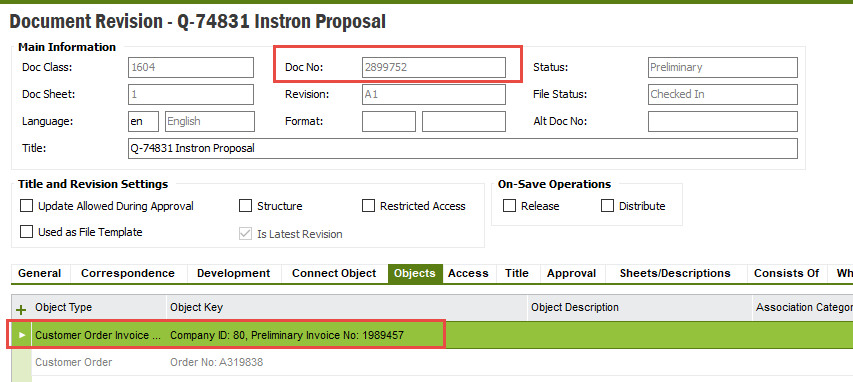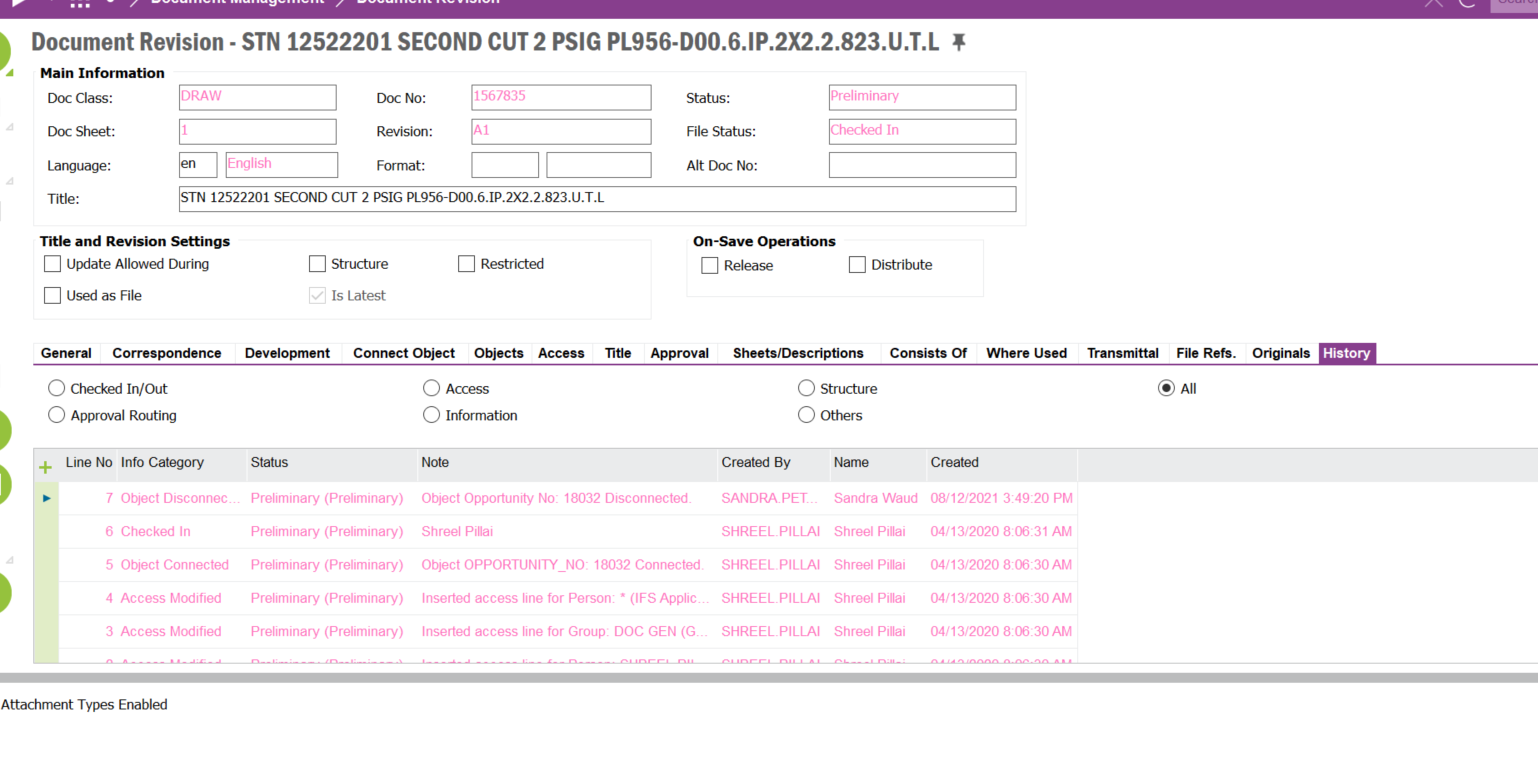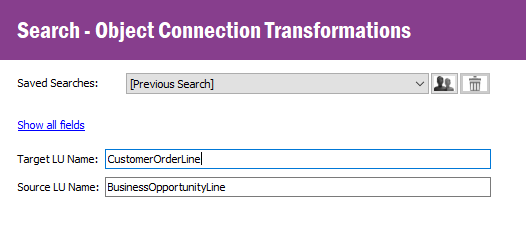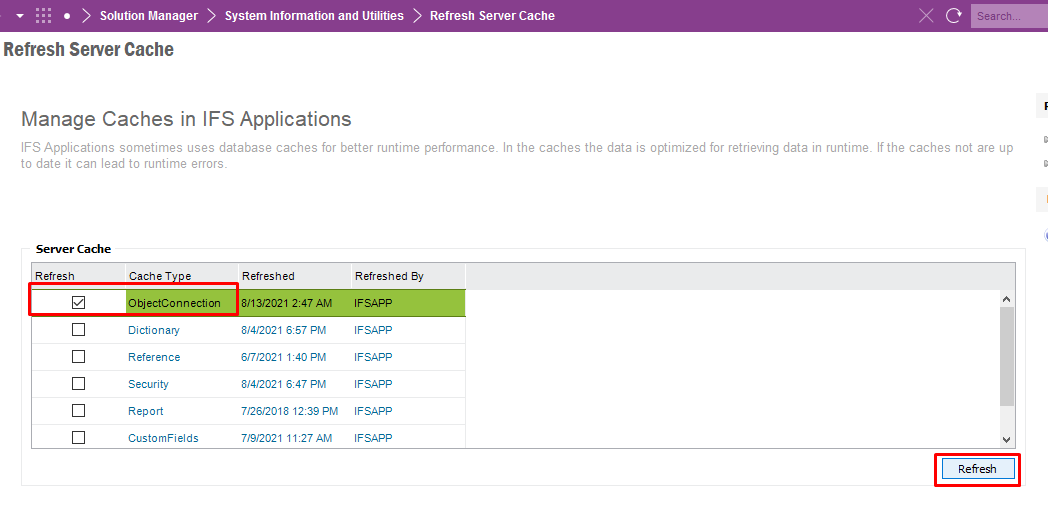We have documents flow from Business Opportunity to Customer Order - in one instance a bunch of documents flowed from Business Opportunity to Customer Order but we don’t actually want them on the Customer Order. How can I detach them without losing the original document attached to Business Opportunity
Just go to the Document Revision for each document and remove the connected object you don’t want. That doesn’t remove the Document Revision itself, just the Document Object Connection that is unwanted.

I did that and it removed it from the Business Opportunity as well - I just want to remove it from the Customer Order and leave it attached to the Business Opportunity
What does the history tab show for the document? Is your process already moving it from the Opportunity to the Customer Order? I was assuming the Customer Order was a secondary Object Connection. If it is removed from the Opportunity, what does the Document Revision history say about when the Opportunity connection was removed? If it was removed earlier when the Customer Order connection was created, then all you can do now is re-connect the Document Revision to the original opportunity as it was earlier.
Assuming this flow is accomplished thru Object Connection Transformations, can you provide a screenshot of the configuration of the OCT for this between the Business Op and the Customer Order?
This is what the history tab shows

Hi
Since the attachments to the customer order is coming from the business opportunity, it is coming from the object connection transformation defined. And you cannot simply delete/unattach the attachment only the attachment in the target LU (customer order), since it is only a short cut attachment to the original one.
You can deactivate the related object connection transformation (OCT) to achieve your requirement. It will detach the attachment in the target LU (customer order), leaving the attachment in the source LU (business opportunity) there.
I have seen there’s a system defined OCT from Business Opportunity Line to Customer Order Line. Are the attachments there in the customer order line, not the customer order ?
If that’s the case, you can search with below Source/Target LUs, and deactivate it.


If a user-defined transformation is there from Business Opportunity to Customer Order, search for accordingly, and deactivate the relevant OCT.
Make sure to refresh the Object Connection cache after the changes, for them to be seen.

Thanks,
This kind of looks like this will permanently stop this flow of docs from Business Opp to Customer Order - I just want to get rid of them from one Customer Order
I don’t think you cannot achieve removing the transformed attachment from particular one customer order or a specific set of orders, with the OCT functionality, since it does not actually attach the document to the target LU (as you have seen in the connected objects tab in the Document revision does not have that target LU as a connected object). I assume it just creates a shortcut to the original attachment.
Maybe you have to define a custom transformation procedure including any conditions (customer ID etc) when the transformation is done, and use that procedure for that specific OCT record. Or maybe you can disable the OCT for Business Opps to Customer Order, and create a custom event instead to attach the document in the customer order whenever an attachment is added to business opportunity, so that it can be removed whenever needed.
Thanks,
What
When you the OCT feature, the “transformed” or “inherited” or “related” documents are not there, it just looks like it. Instead of looking for documents connected to the object on the screen, we “look in other places” (according to the OCT rules you have) as well.
Reply
Enter your E-mail address. We'll send you an e-mail with instructions to reset your password.
